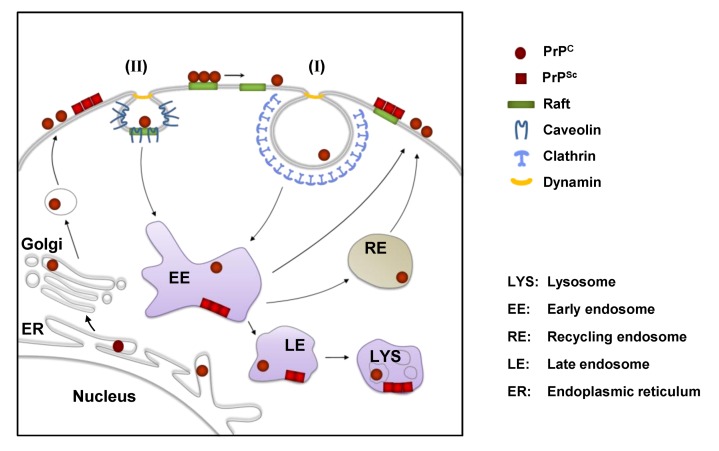Figure 2.
Cell biology of PrP in scrapie-infected cells. PrPC is synthesized in the endoplasmic reticulum (ER) and passes through the secretory pathway to the cell surface, where it resides in lipid rafts. In many cells, PrPC leaves lipid rafts prior to being internalized by clathrin-dependent endocytosis (I). Clathrin-independent raft/caveolae-dependent internalization (II) of PrPC has also been proposed for some cells. PrPC can be degraded by lysosomes or rapidly recycled back to the cell surface by recycling endosomes (RE). In cultured scrapie-infected cells the conversion of PrPC to PrPSc is believed to take place on the cell surface and/or in vesicles along the endolysosomal pathway. After conversion PrPSc can accumulate at the cell surface or in intracellular vesicles (e.g. lysosomes).

